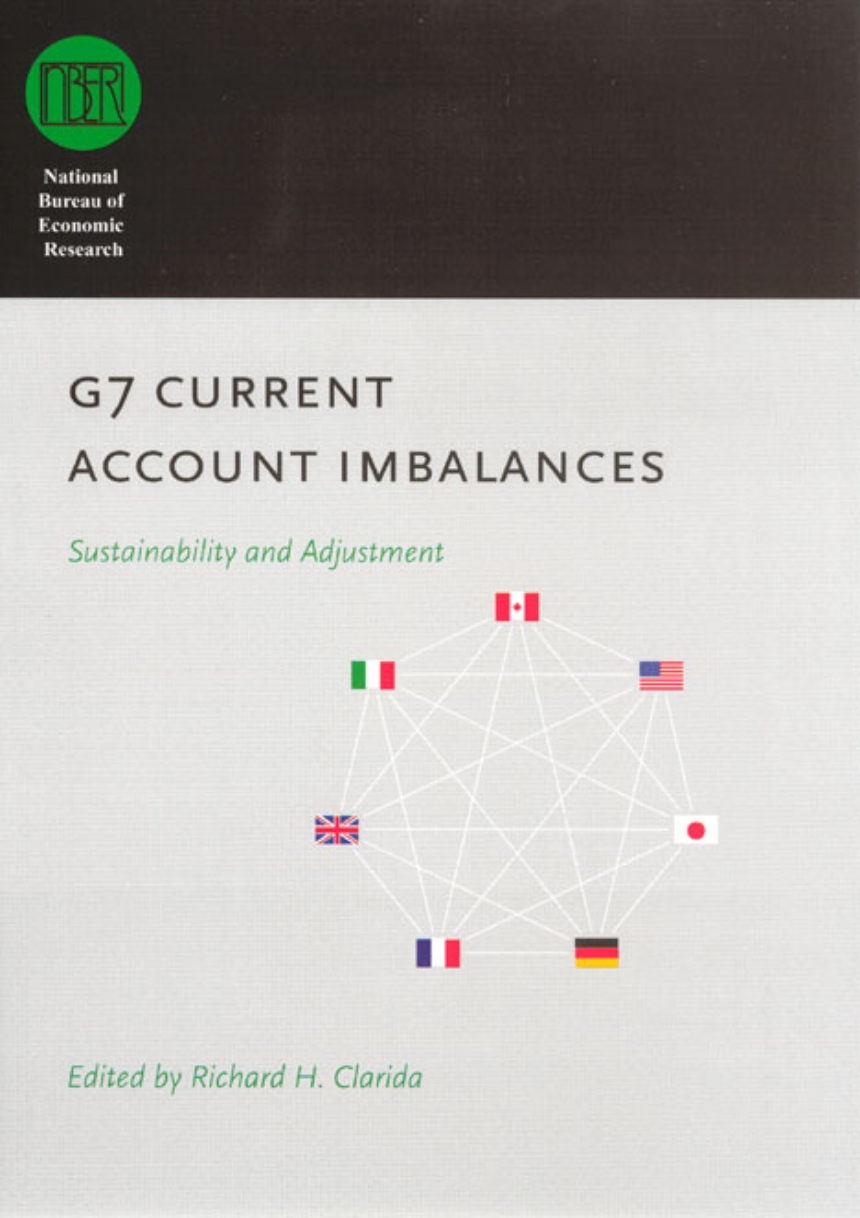G7 Current Account Imbalances
Sustainability and Adjustment
The current account deficit of the United States is more than six percent of its gross domestic product—an all-time high. And the rest of the world, including other G7 countries such as Japan and Germany, must collectively run current account surpluses to finance this deficit. How long can such unevenness between imports and exports be sustained, and what form might their eventual reconciliation take? Putting forth scenarios ranging from a gradual correction to a crash landing for the dollar, G7 Current Account Imbalances brings together economists from around the globe to consider the origins, status, and future of those disparities.
An esteemed group of collaborators here examines the role of the bursting of the dot-com bubble, the history of previous episodes of current account adjustments, and the possibility of the Euro surpassing the dollar as the leading international reserve currency. Though there are areas of broad agreement—that the imbalances will ultimately decline and that currency revaluations will be part of the solution—many areas of contention remain regarding both the dangers of imbalances and the possible forms of adjustment.
This volume will be of tremendous value to economists, politicians, and business leaders alike as they look to the future of the G7 economies.
448 pages | 116 line drawings, 82 tables | 6 x 9 | © 2007
National Bureau of Economic Research Conference Report
Economics and Business: Business--Industry and Labor, Economics--Government Finance, Economics--International and Comparative, Economics--Money and Banking
Table of Contents
Introduction
Richard H. Clarida
I. ORIGINS OF CURRENT ACCOUNT IMBALANCES
1. From World Banker to World Venture Capitalist: U.S. External Adjustment and the Exorbitant Privilege
Pierre-Olivier Gourinchas and Hélène Rey
Comment: José De Gregorio
2. A Global Perspective on External Positions
Philip R. Lane and Gian Maria Milesi-Ferretti
Comment: Richard Portes
3. Direct Investment, Rising Real Wages, and the Absorption of Excess Labor in the Periphery
Michael P. Dooley, David Folkerts-Landau, and Peter Garber
Comment: Shang-Jin Wei
II. EMPIRICAL STUDIES OF G7 CURRENT ACCOUNT AND EXCHANGE RATE ADJUSTMENT
4. Current Account Deficits in Industrial Countries: The Bigger They Are, the Harder They Fall?
Caroline Freund and Frank Warnock
Comment: Assaf Razin
5. Are There Thresholds of Current Account Adjustment in the G7?
Richard H. Clarida, manuela Goretti, and Mark P. Taylor
Comment: Robert E. Cumby
6. Current Account Reversals: Always a Problem?
Muge Adalet and Barry Eichengreen
Comment: Fredric S. Mishkin
7. Understanding the U.S. Trade Deficit: A Disaggregated Persepective
Catherine L. Mann and Katherina Plück
Comment: Edwin M. Truman
8. Will the Euro Eventually Surpass the Dollar as Leading International Reserve Currency?
Menzie Chinn and Jeffrey A. Frankel
Comment: Edwin M. Truman
III. THEORETICAL PERSPECTIVES ON CURRENT ACCOUNT SUSTAINABILITY AND ADJUSTMENT
9. The Unsustainable U.S. Current Account Position Revisited
Maurice Obstfeld and Kenneth Rogoff
Comment: Kristin J. Forbes
10. Smooth Landing or Crash? Model-Based Scenarios of Global Current Account Rebalancing
Hamid Faruqee, Douglas Laxton, Dirk Muir, and Paolo A. Pesenti
Comment: Lars E. O. Svensson
11. The Dot-Com Bubble, the Bush Deficits, and the U.S. Current Account
Aart Kraay and Jaume Ventura
Comment: Joseph E. Gagnon
Contributors
Author Index
Subject Index
